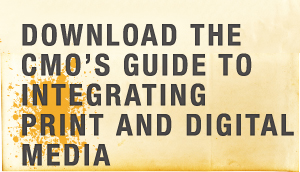The printing industry has been around for hundreds of years. Despite other mediums that have come along and disrupted this traditional channel, print has evolved and adapted and continues to bring advertisers big returns on their investments.
Despite prints’ staying power, there continue to be the naysayers who report that print is dead. This is the biggest myth surrounding print but it’s not the only one.
MYTH: You Can’t Personalize Print
The reality is that print campaigns can absolutely be personalized for better engagement. This myth somehow got started in the past 10 years when digital marketing really took off.
Thanks to variable printing, printed materials can be personalized (name, city, etc.) while keeping all other information such as logo and color scheme the same.
MYTH: Print Campaigns are No Longer Effective
The reality is, printed materials hold a customer’s attention much longer, thereby making your ad much more effective. Consider the numerous distractions consumers face while surfing the web, either via a laptop or mobile device. They may be researching a product while at the same time checking their email and social media pages and disarming the plethora of popup ads bombarding them.
When that same consumer sits down with a newspaper or magazine, they tend to give the content before them their undivided attention.
MYTH: Print Harms the Environment
The reality is, all paper products are recyclable and the printing industry is in no way harming the environment. Most newspapers and magazines are printed on recycled paper, and those businesses who use printed materials such as brochures and flyers can use paper stock also made of recycled paper.
MYTH: Print and Digital Don’t Mix
The reality is that businesses who wish to reach as many targeted consumers as they can will benefit from an integrated marketing campaign, that is one that uses traditional media such as newspaper ads right alongside digital channels like social media posts.
The key is to leverage data-driven insights about consumer behavior to determine the best mix of online and offline channels. A media buyer can help you track response rates of channels so you can adjust your marketing strategy moving forward.
 MYTH: Print’s Options Are Very Limited
MYTH: Print’s Options Are Very Limited
The reality is, as print has evolved, it has offered businesses more options when it comes time to printing their marketing collateral. Textured papers and almost-endless color combinations make todays brochures and sell sheets eye-popping and memorable.
And thanks to QR codes and augmented reality, today’s magazine and newspaper ads are ultimately engaging and effective.
MYTH: Print is Only Affordable When Done in Large Volumes
The reality is, although in the past companies had to spend more to save more, thanks to innovative technology, companies can print short runs when necessary, as well as on-demand. And, as mentioned earlier, it has never been easier to personalize mass quantities of documents or customize individual documents.
Maybe you’ve heard these print myths before and believed them, but now you know print’s reality. Here’s another reality: according to a Nielsen survey, nearly 90% of consumers say they want to receive print marketing collateral related to promotions and sales. Why wouldn’t you want to give the consumers exactly what they want?
And, come to think of it, why wouldn’t you want to use an integrated marketing approach that offers the best chance of reaching your target audience and driving action? With digital’s 24/7 delivery capabilities and print’s full engagement, integrated campaigns deliver your message on whatever channel your audience prefers.
Related Posts
Here’s Why Print Advertising Will Gain Even More Traction in 2016
What Political Campaign Blunders Can Teach Us about Print Advertising





